
MSI has always been a close partner of NVIDIA with their graphics cards. Alongside NVIDIA’s release of their RTX GPUs, MSI has released their own take of NVIDIA’s RTX video cards. This time, we’ll be taking a look at an aftermarket version of the GeForce RTX 2070, the MSI GeForce RTX 2070 Armor 8G.
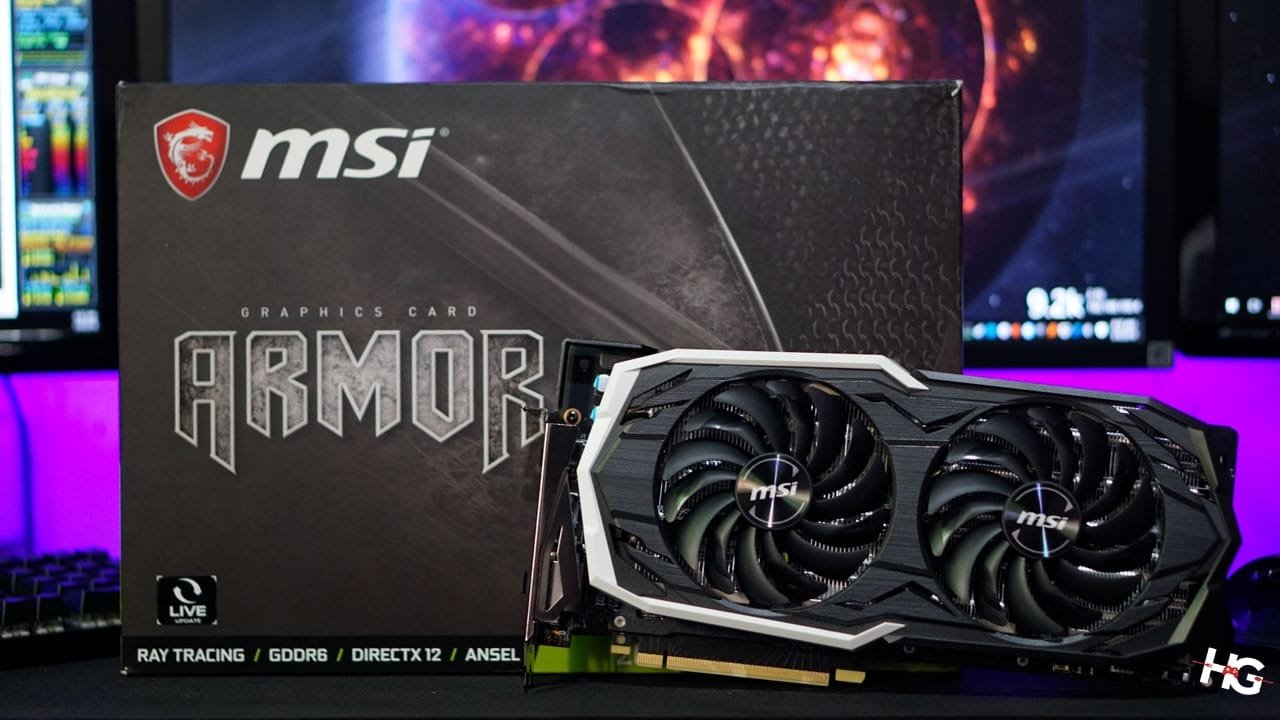
| NVIDIA GeForce RTX 2070 FE | MSI GeForce RTX 2070 Armor 8G | |
| GPU | TU106 | TU106 |
| Architecture | Turing | Turing |
| Transistor Count | 10.8 billion | 10.8 billion |
| Manufacturing Process | 12nm | 12nm |
| Base Clock | 1410MHz | 1410MHz |
| Boost Clock | 1710MHz | 1620MHz |
| CUDA Cores | 2,304 | 2,304 |
| Raster Operator Units | 64 | 64 |
| RTX-OPS | 45T | 45T |
| Memory | 8GB GDDR6, 14Gbps | 8GB GDDR6, 14Gbps |
| Memory Bus Width | 256-bit | 256-bit |
| TDP | 185W | 175W |
| Power Connectors | 1x 8-pin PCIe | 1x 8-pin, 1x 6-pin, PCIe |
| Display Connections | DisplayPort, HDMI 2.0b, USB Type-C, DVI-DL | 3x DisplayPort 1.4, 1x HDMI 2.0b, 1x USB Type-C |
| HDCP Output Support | 2.2 | 2.2 |
| Dimensions | 228.6 x 112.6mm (LxH) | 295 x 140 x 51mm (LWH) |

Unlike their more premium Lightning or Duke series, the MSI GeForce RTX 2070 Armor 8G comes with a muted design. The video card is clad in dark gray colors only broken up by the white highlights on half of the fan shroud, text on the side, and the MSI logo on the backplate.
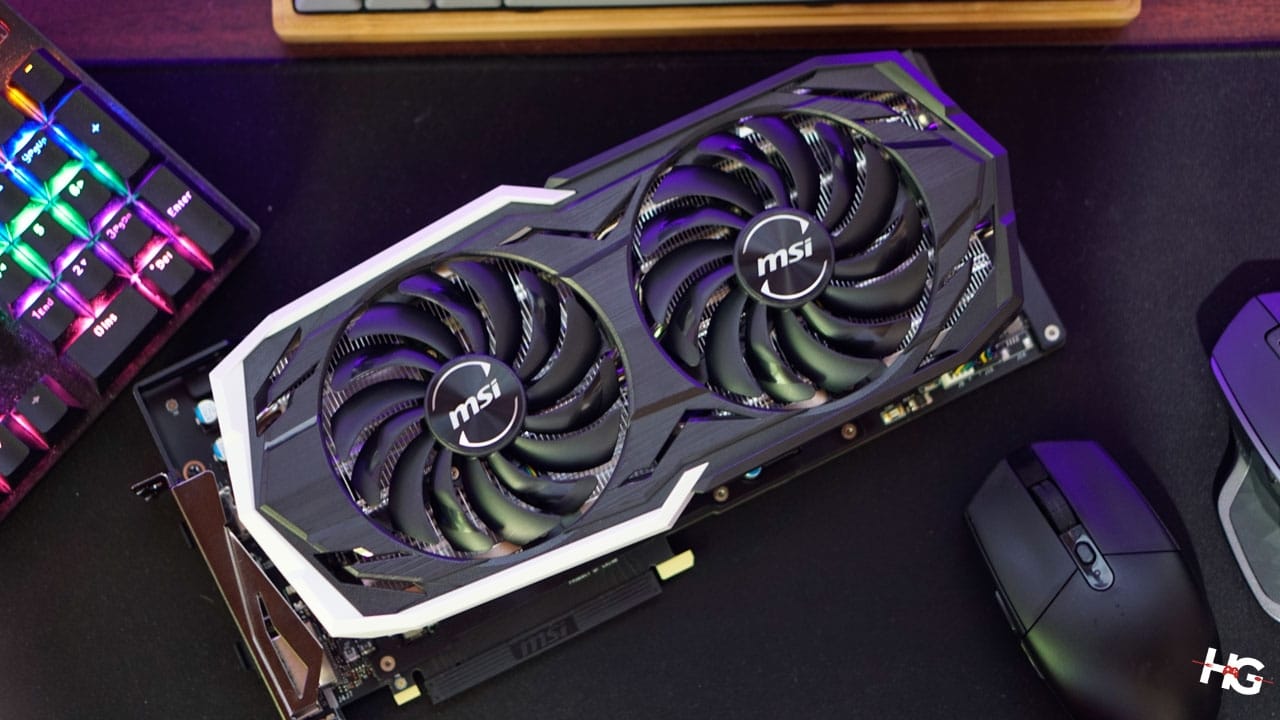
Like the NVIDIA GeForce RTX 2070 Founders Edition, the MSI GeForce RTX 2070 Armor 8G comes with a dual fan design. Unlike the former, however, MSI has tweaked the fans in to offer better cooling capabilities.
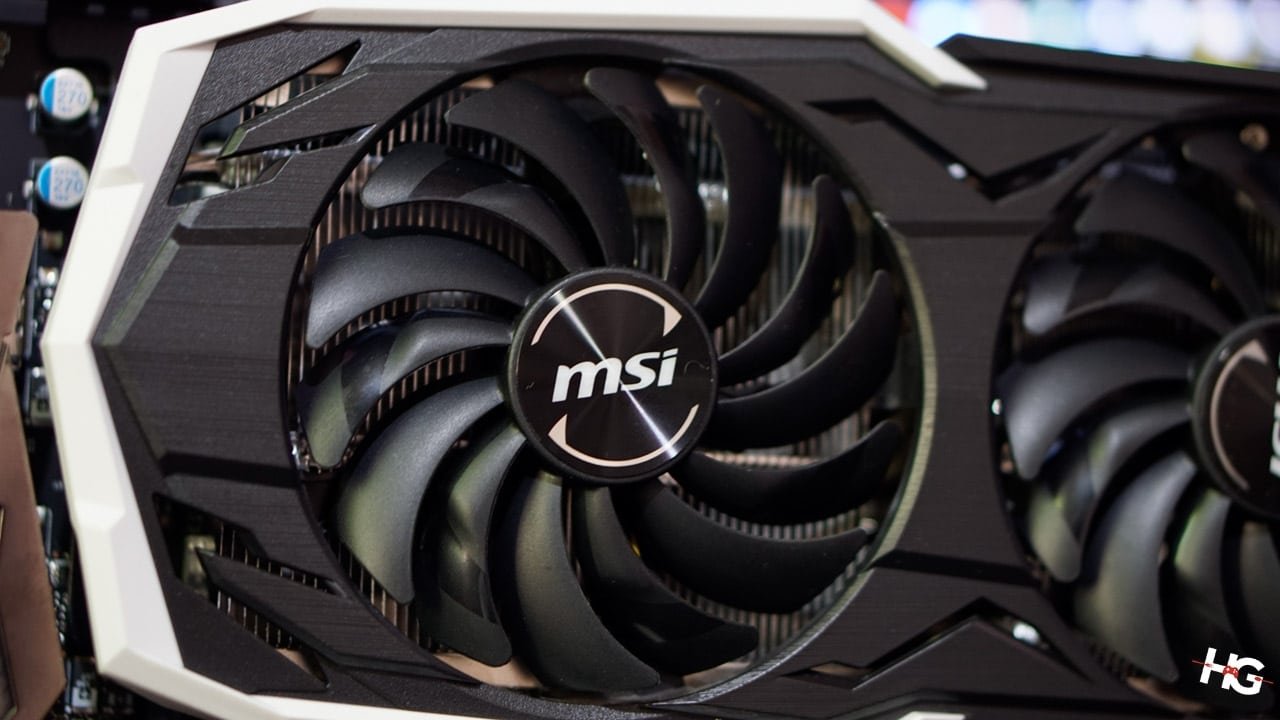
The TORX Fan 2.0 fans found on the card are composed of two sets of blades: 7 dispersion fan blades that steeper than most fans to accelerate airflow and 7 traditional fan blades to provide steady airflow to the card. In total, the card is cooled by 14 fans in each of its two fans.

Aside from the redesigned fans, the MSI GeForce RTX 2070 Armor 8G has a rather massive heatsink. In total, there are five heatpipes running through it. The heatsink also allows the MSI GeForce RTX 2070 Armor 8G to run passively until 60°c, which MSI calls ZERO FROZR. After the 60°c is reached, the TORX 2.0 fans will quickly kick in to cool the card.
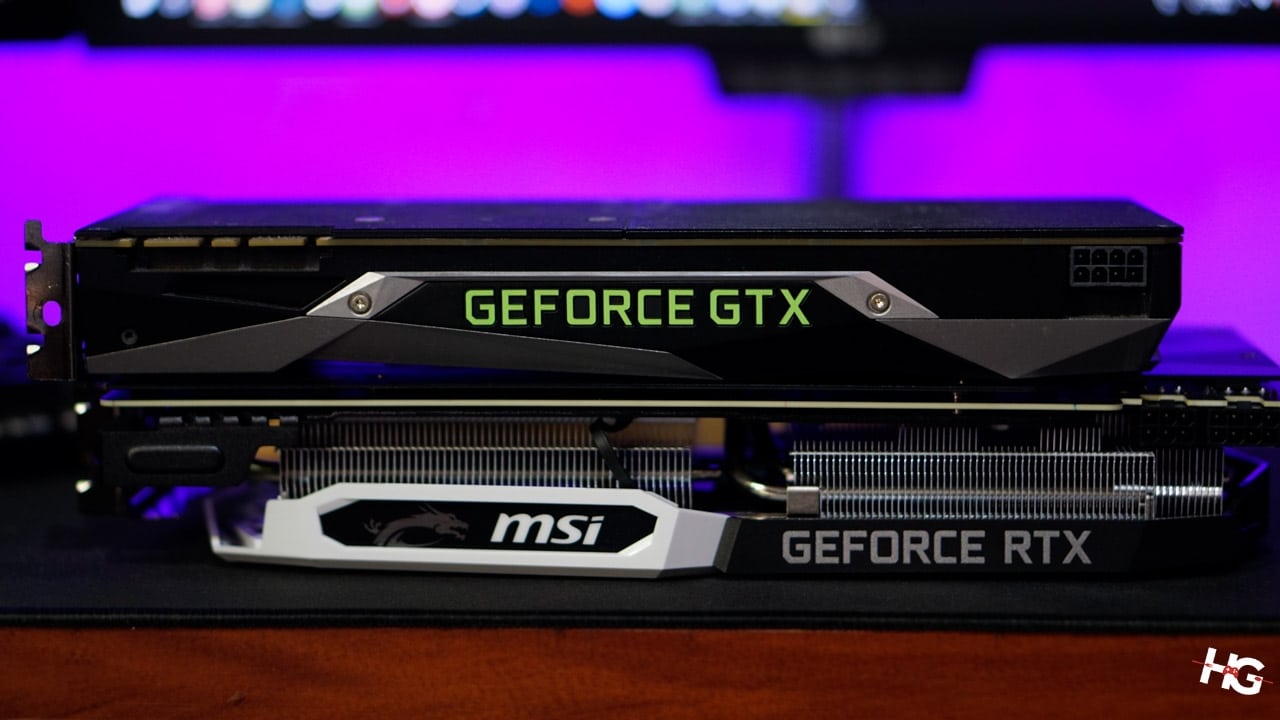
Measuring at 295 x 140 x 51mm (LWH), the card occupies 2.5 slots in a normal case. This means that most ITX cases in the market would probably not support this card. If you’re on a rather tight case, best check to see if the card fits in your case.

Since the card is pretty hefty at almost a kilogram in weight, MSI has included a backplate with the card. This will help to minimize GPU sag when the card has been mounted on a case.
As is standard in most video card released nowadays, the MSI GeForce RTX 2070 Armor 8G comes with RGB lighting. The card’s lighting system is compatible with the brand’s Mystic Light 3 software that allows it to synchronize its RGB lighting to other Mystic Light 3-compatible components in your rig.
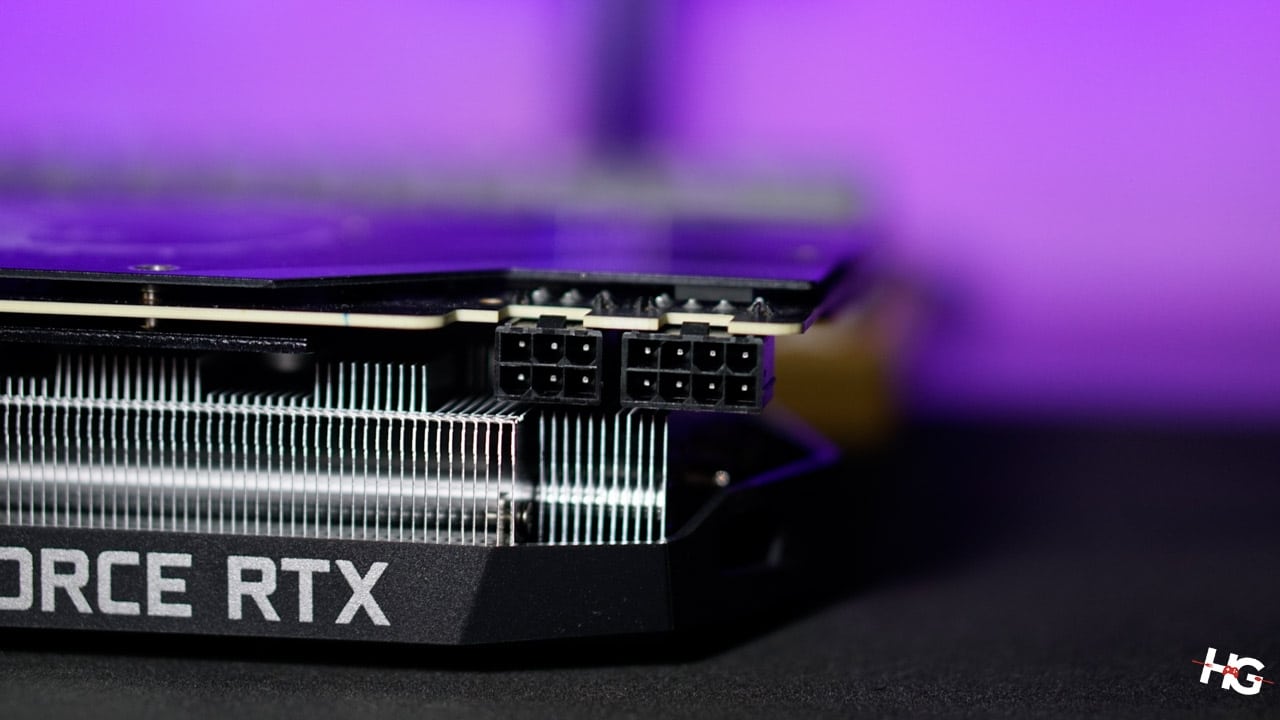
Despite its lower stock Boost Clock of 1,620MHz compared to the RTX 2070 Founders Edition’s 1,710MHz, the card comes with an extra 6-pin PCIe plug with the stock 8-pin PCIe power connector. This allows the card to have more overclocking headroom in terms of thermals despite its lower 175W TDP.

MSI has decided to sack the Dual-Link DVI port in lieu of three DisplayPort 1.4 ports, a single HDMI 2.0b, and a USB Type-C port for its display connections.
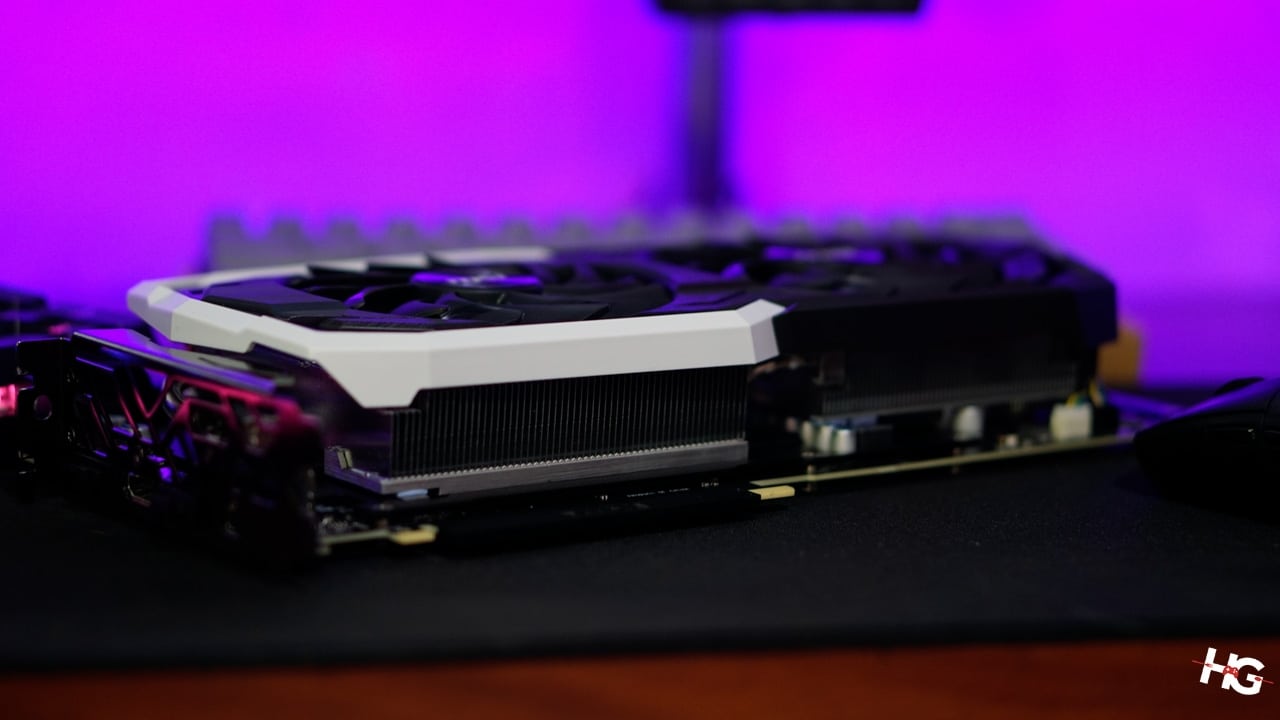
In order to see what the MSI GeForce RTX 2070 Armor 8G is capable of, we placed it on our test bench consisting of the following components:
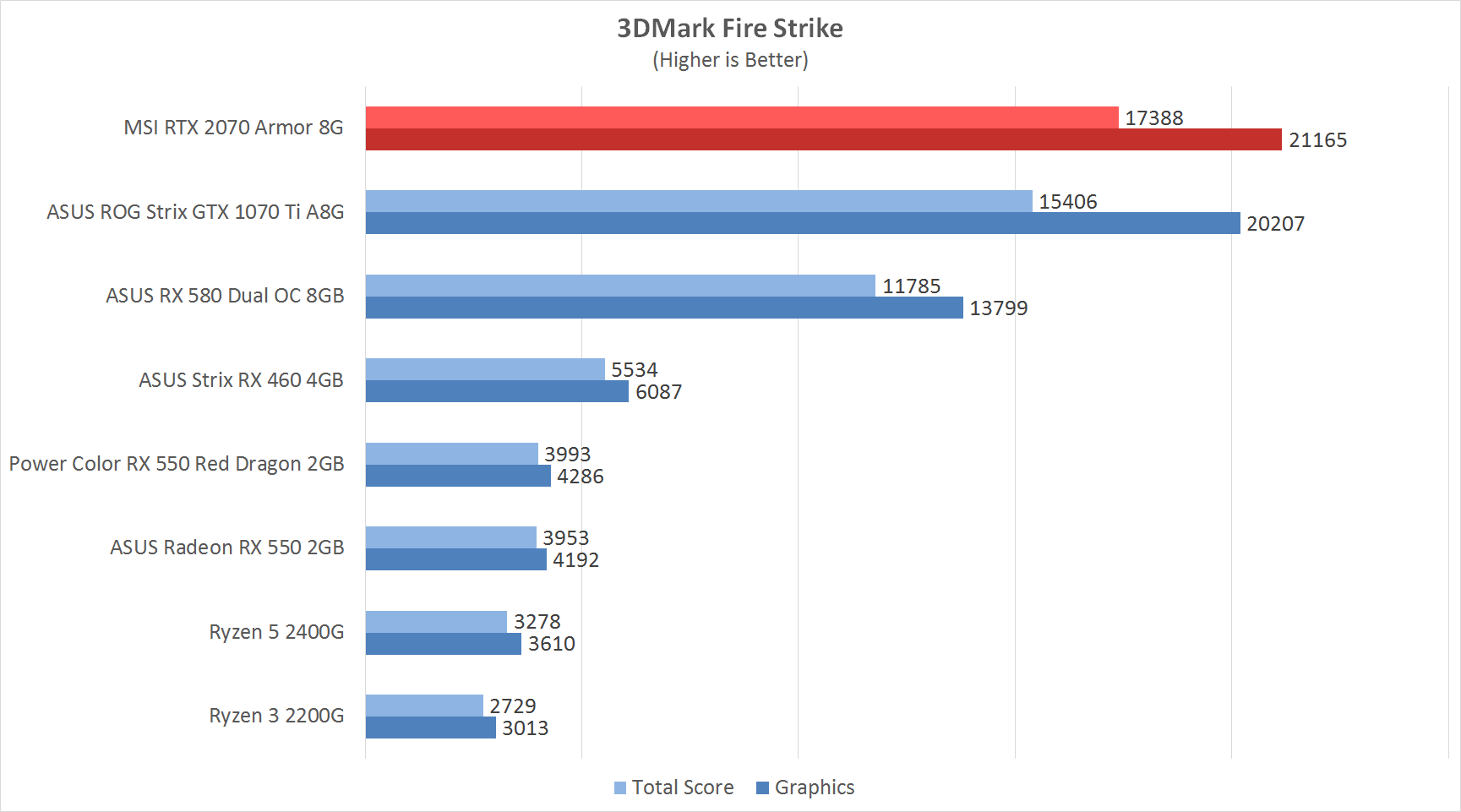


“Designed to showcase the DirectX 11 API, the Futuremark 3DMark Firestrike became a standard in benchmarking as it not only tests the capabilities of the GPU, but also the capabilities of the whole system for a complete stress test.”
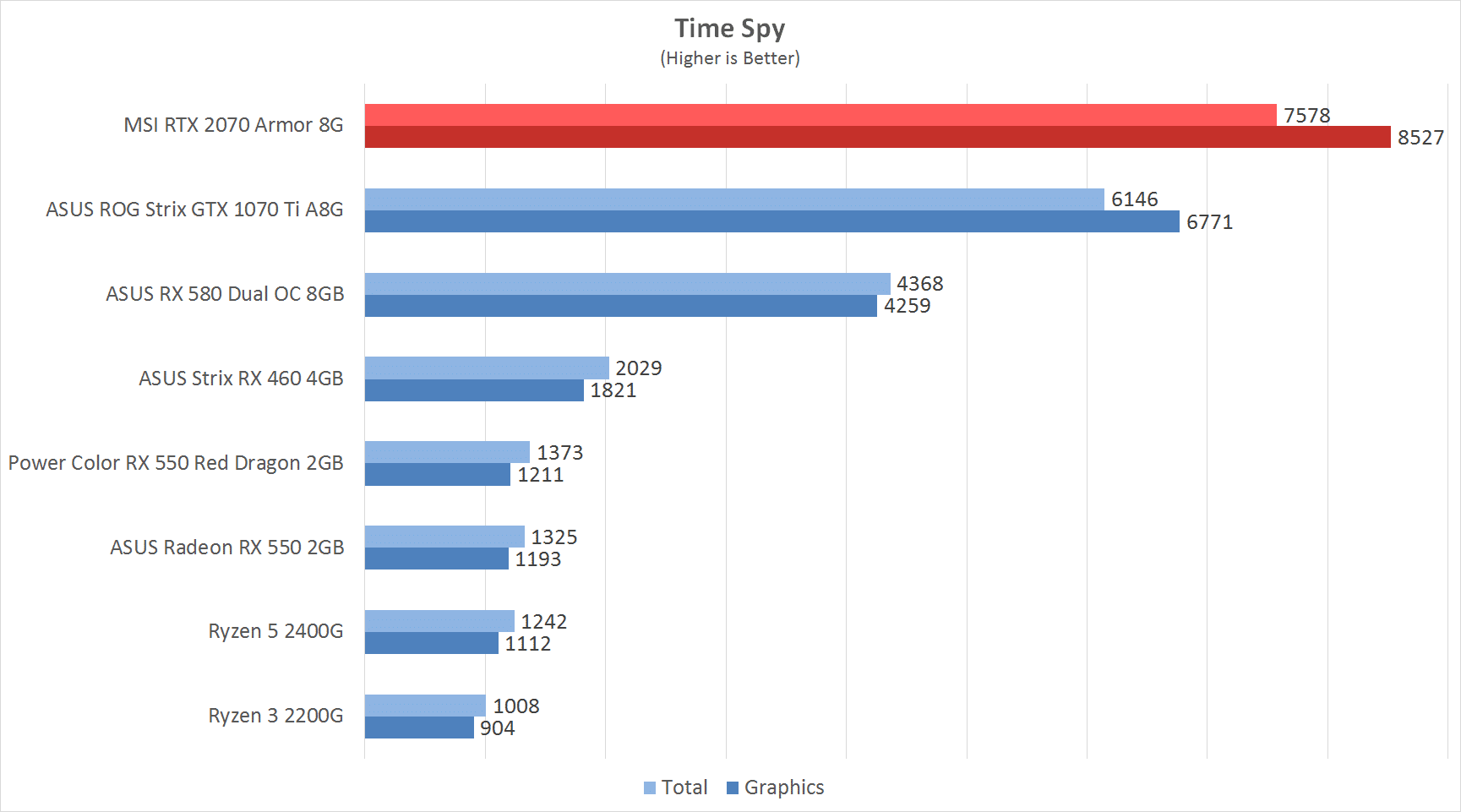
“With its pure DirectX 12 engine, built from the ground up to support new API features like asynchronous compute, explicit multi-adapter, and multi-threading, Time Spy is the ideal benchmark for testing the DirectX 12 performance of modern graphics cards.”
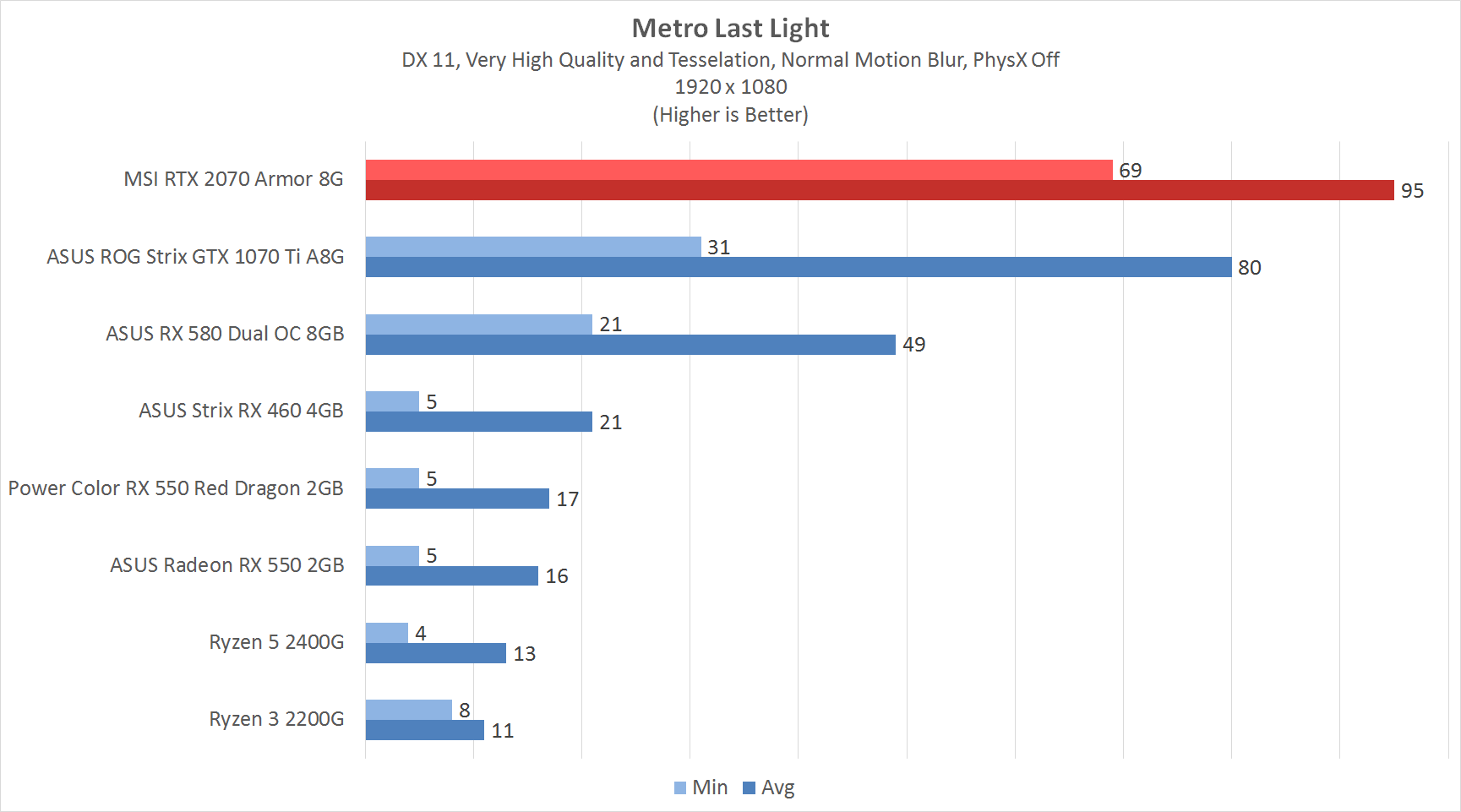
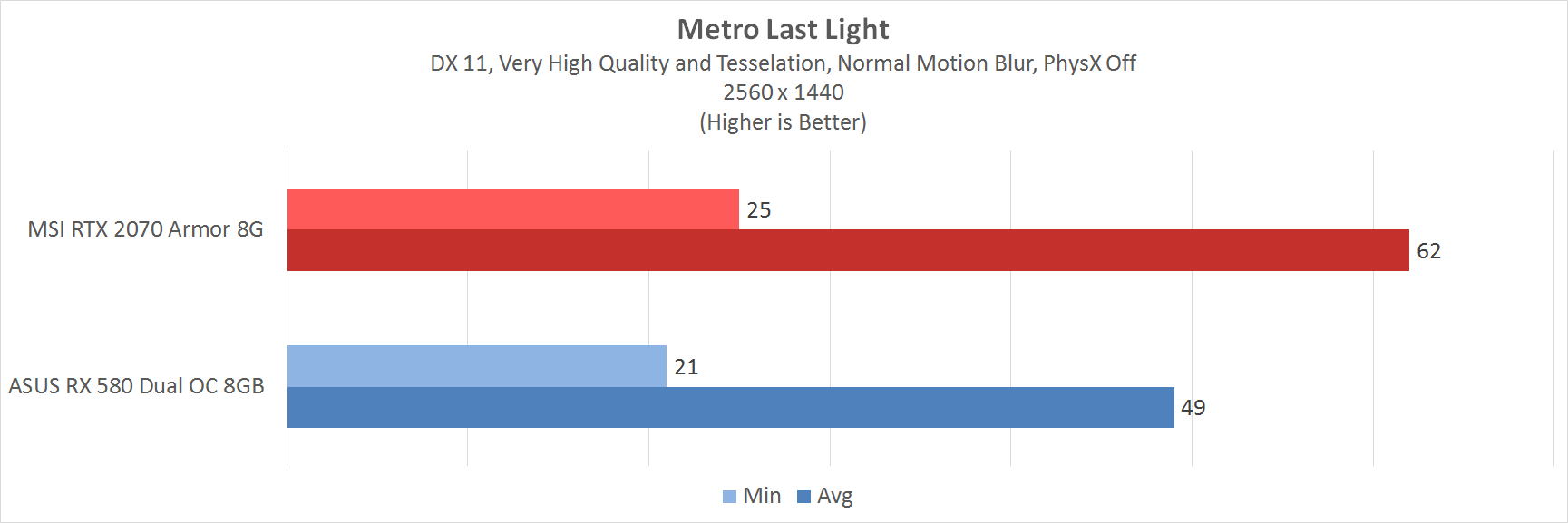
“It is the year 2034. Beneath the ruins of post-apocalyptic Moscow, in the tunnels of the Metro, the remnants of mankind are besieged by deadly threats from outside – and within. Mutants stalk the catacombs beneath the desolate surface, and hunt amidst the poisoned skies above.”
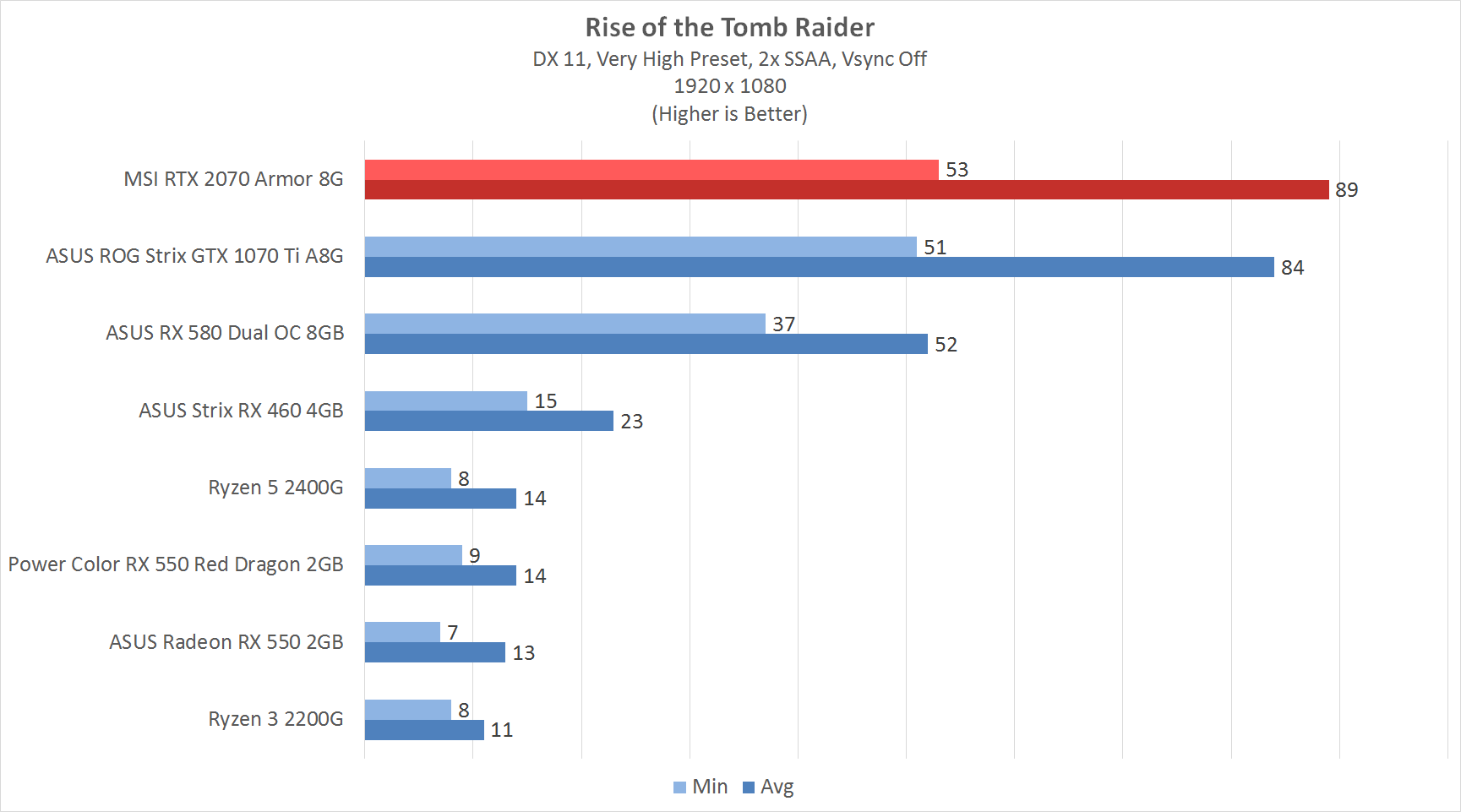
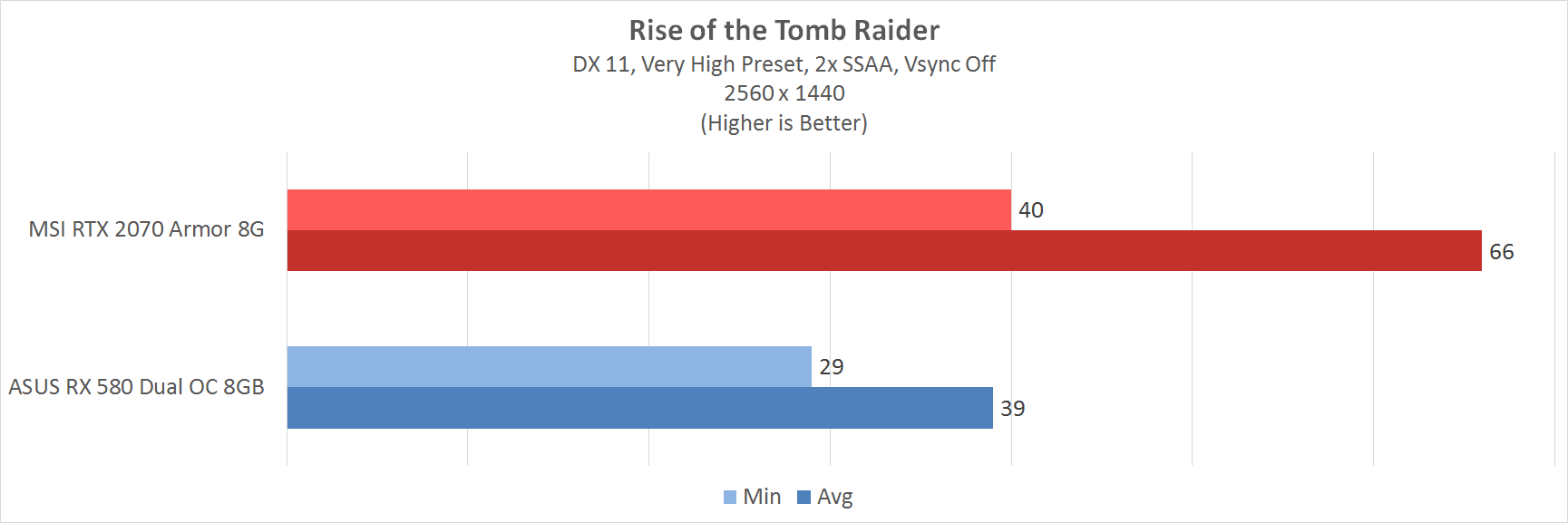
“A follow-up to the reboot of the series, Lara is now searching for a lost treasure that his father was investigating before his passing. Following the same gameplay as Tomb Raider reboot from 2013, the Rise of the Tomb Raider is a worthy title under the Tomb Raider series.”
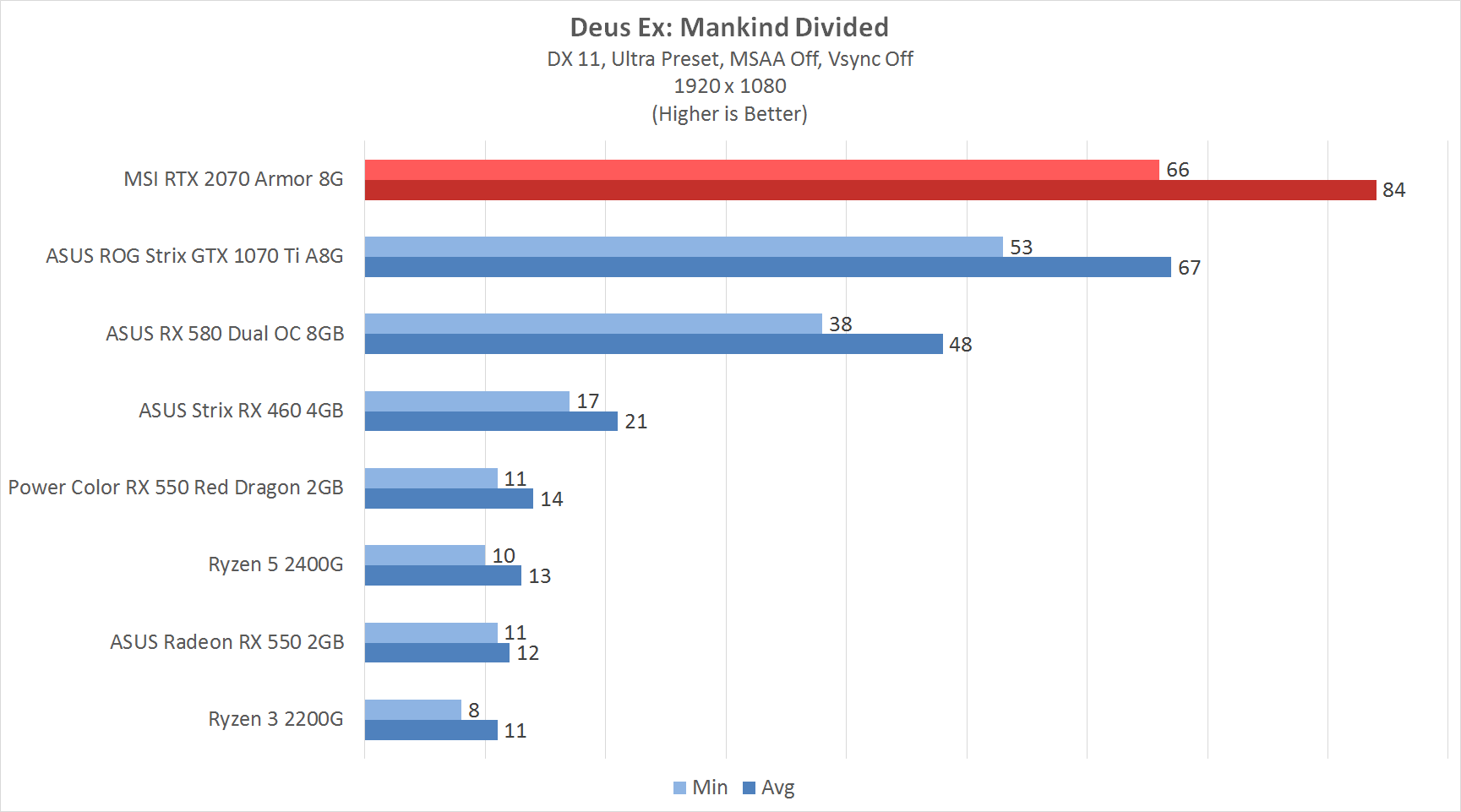
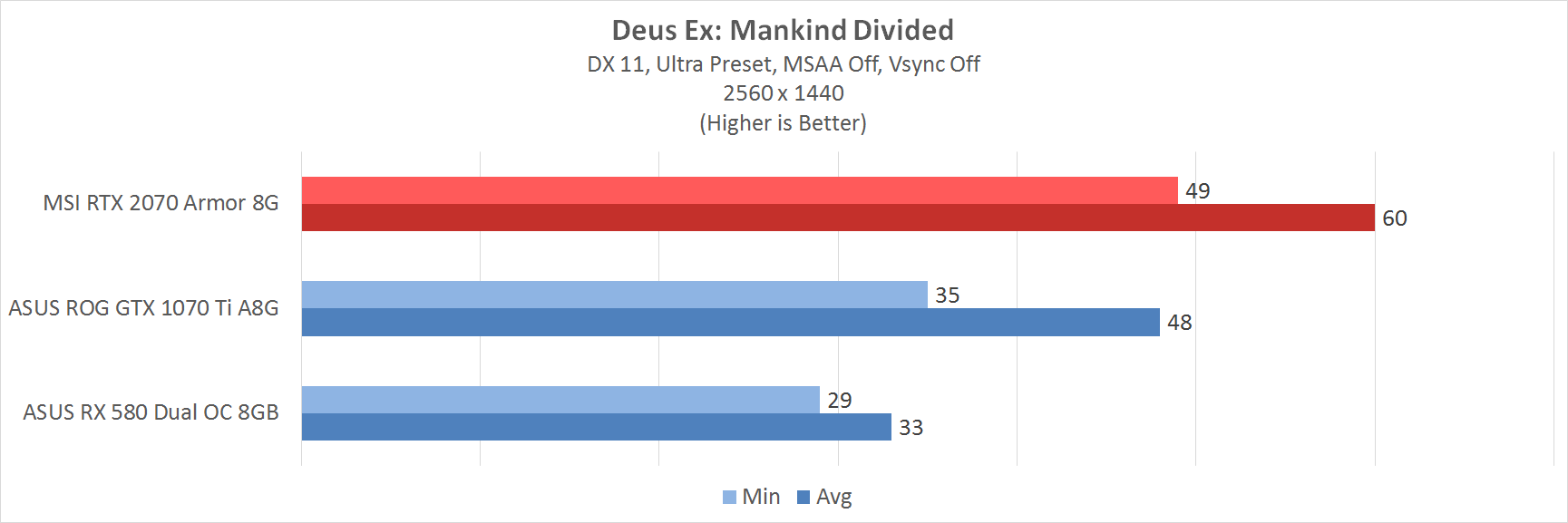
“Now an experienced covert operative, Adam Jensen is forced to operate in a world that has grown to despise his kind. Armed with a new arsenal of state-of-the-art weapons and augmentations, he must choose the right approach, along with who to trust, in order to unravel a vast worldwide conspiracy.”
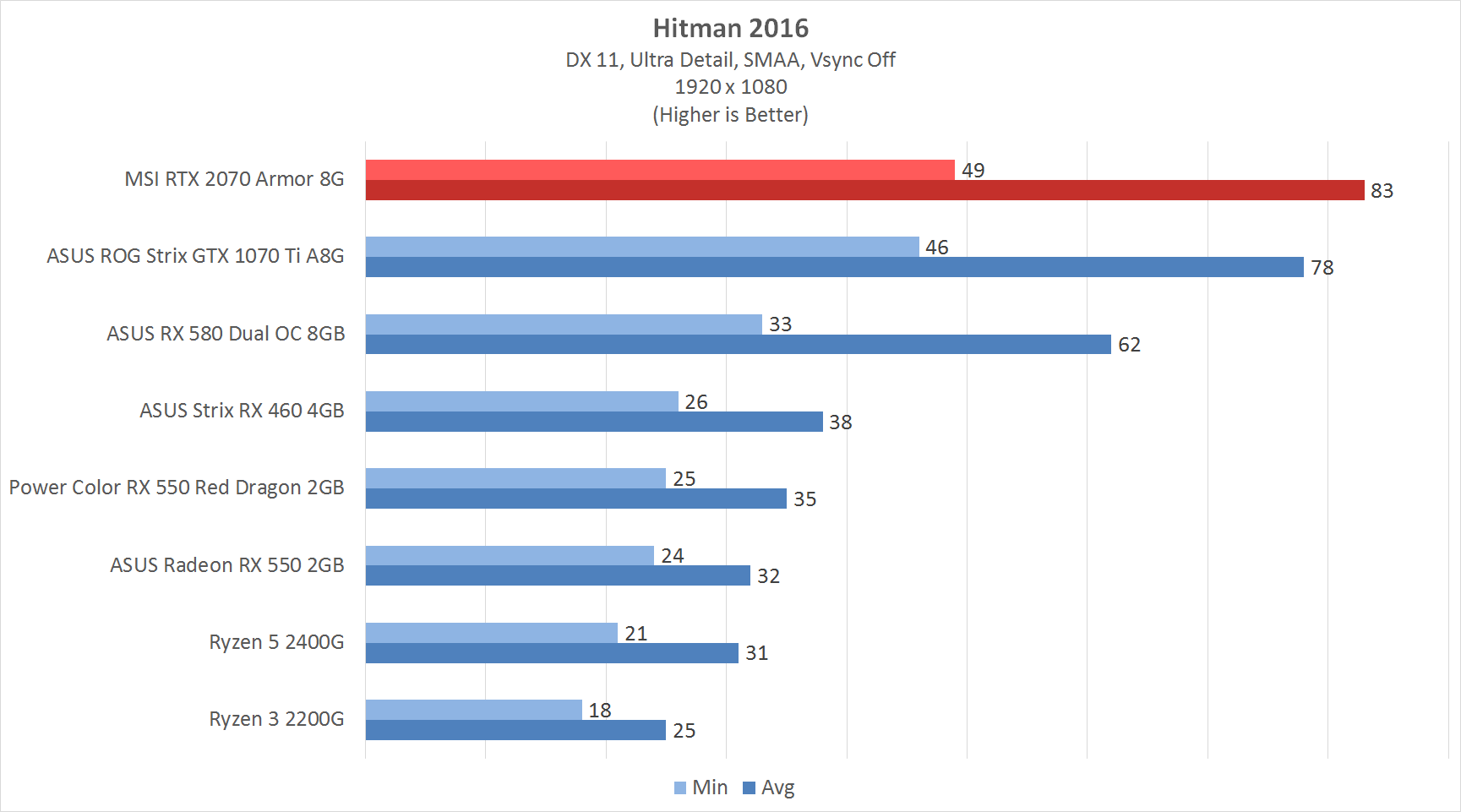
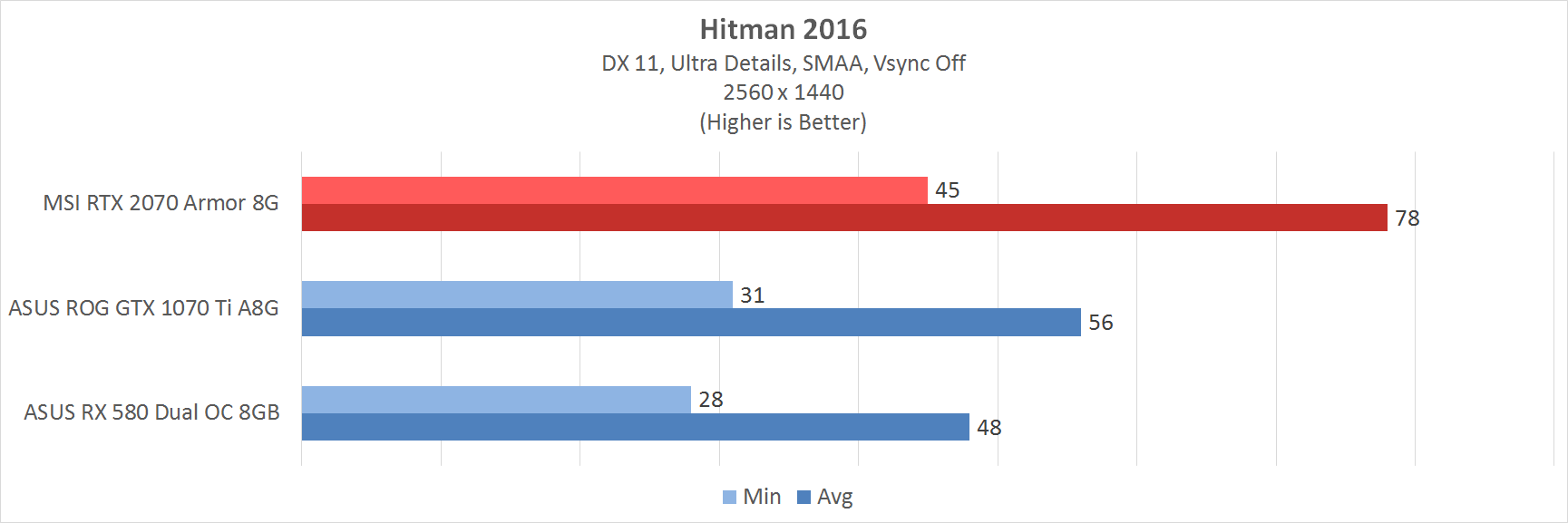
“There is a world beyond ours. Beyond nations, justice, ethics. It never sleeps. It exists everywhere. And once you enter….there is no going back. Welcome to the World of Assassination. You are Agent 47, the world’s ultimate assassin.”
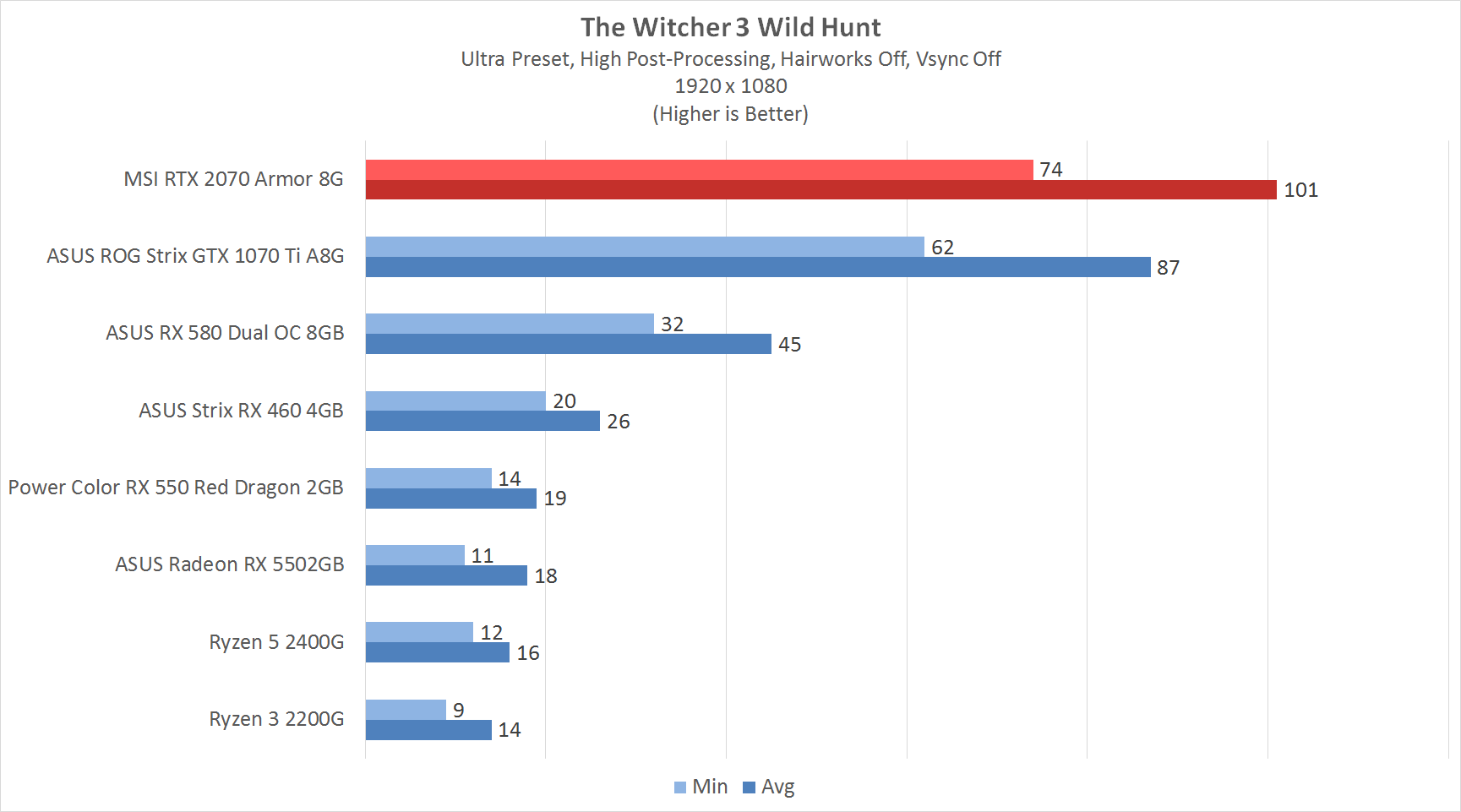
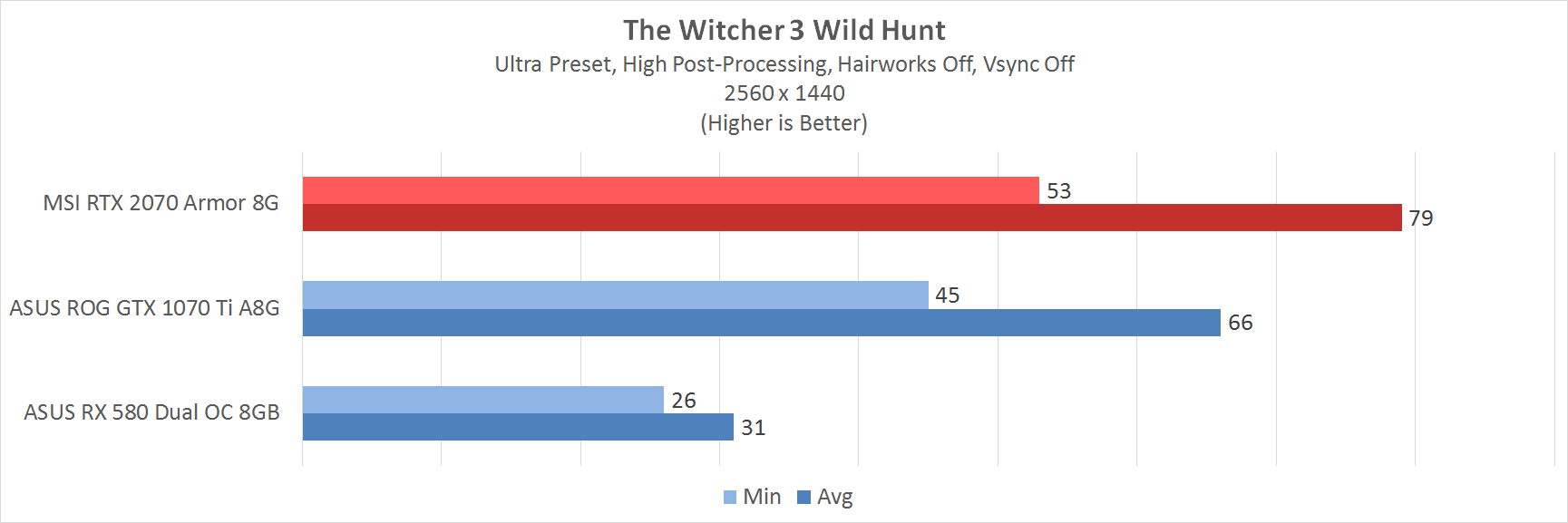
“The last entry in Geralt’s adventure, The Witcher 3: Wild Hunt aims to perfect The Witcher formula. A follow-up to The Witcher 2, which was also regarded for its technical marvel, The Witcher 3: Wild Hunt is a perfect candidate for a benchmarking tool as it runs consistently and stresses most cards with its beautiful graphics.”
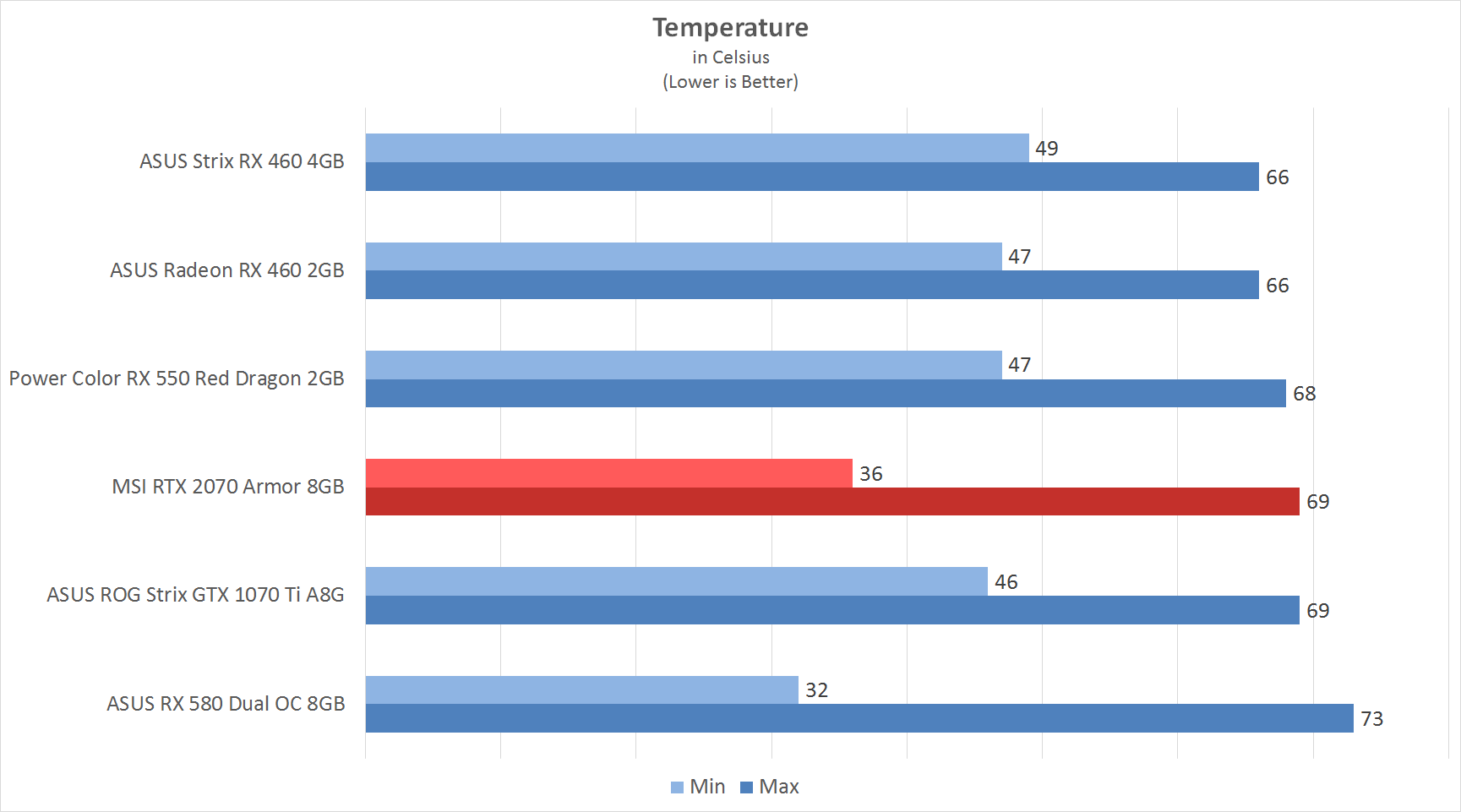
Due to its massive heatsink and improved fans, the MSI GeForce RTX 2070 Armor 8G was able to keep its cool and every benchmark we threw at it. If sufficiently cooled, the card will be able to run some games completely passively.
Once more demanding games are run, however, the card will spin its TORX 2.0 fans to keep itself cool. Despite the added heat, the MSI GeForce RTX 2070 Armor 8G was still able to hover around 69°c, which is pretty low given that it’s a powerful card that pumps heat like a madman.
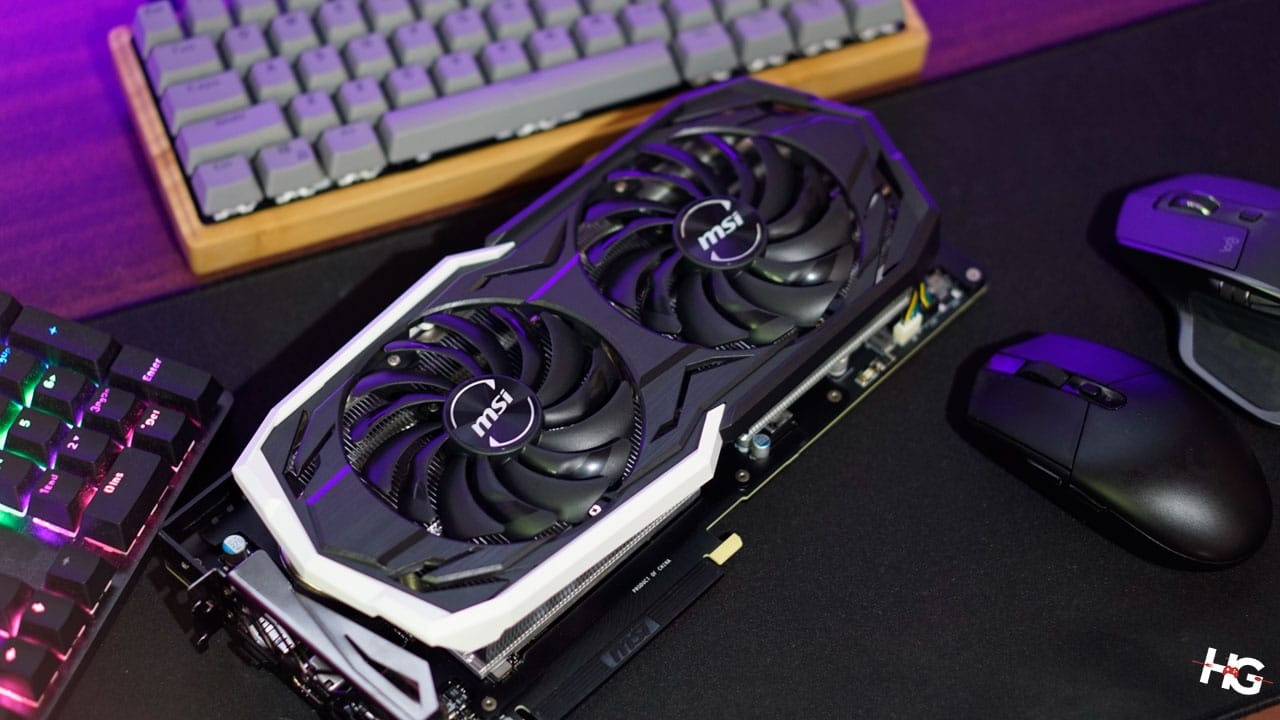
Despite topping the in our benchmarks, there are two ways to look at the MSI GeForce RTX 2070 Armor 8G, and by extension, the rest of the NVIDIA GeForce RTX GPUs.
If you’re coming from the previous Pascal generation with cards such as the GTX 1080, 1070 Ti, and 1070, then there’s little forcing you to upgrade your GPU aside from Turing-exclusive technologies such as Ray-Tracing and DLSS.
If you still have an older GPU like NVIDIA’s 900-series cards, then the there’s a significant bump in performance when upgrading to the RTX series.
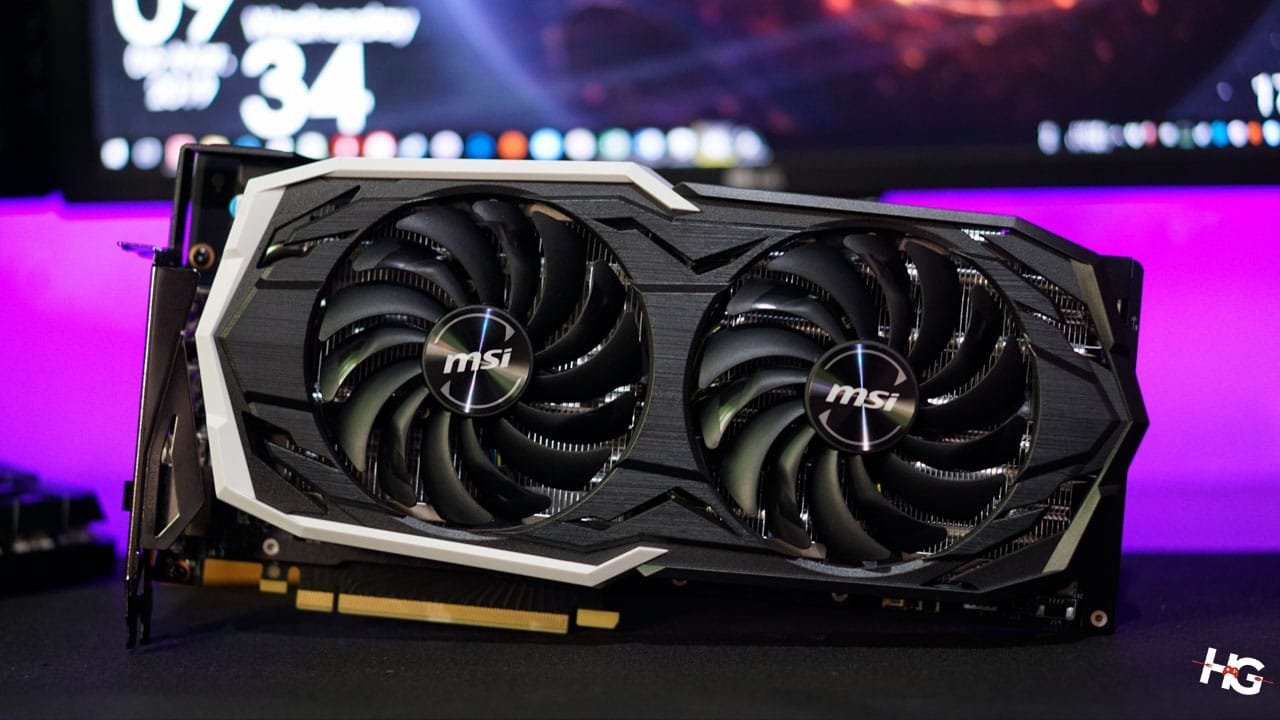
Priced at around PhP 30,000 (USD 500), the MSI GeForce RTX 2070 Armor 8G offers a superb trade for your hard-earned cash with its performance, great cooling system, and the latest architecture from NVIDIA. Given that you’re upgrading from two generations ago.
Its large footprint, however, will limit potential buyers to MicroATX or larger cases. As we’ve said before, most ITX cases probably won’t fit the card due to its 2.5-slot requirement. The trade-off, however, is a cooler and quieter experience.

Overall, we believe that the MSI GeForce RTX 2070 Armor 8G is one hell of a card to get for your system. This is why we are giving it our 100% Satisfying Graphics card award. If you’ve been keeping your old GPU for a couple of years now, then this might be the time to get a new one.
